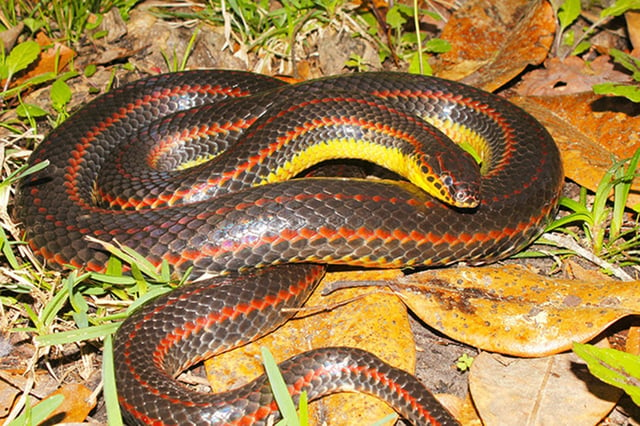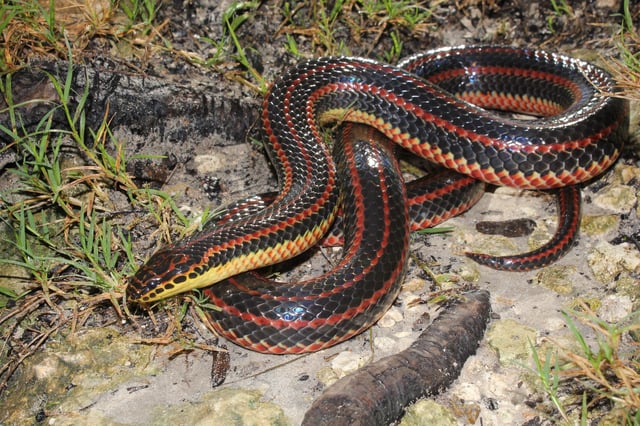Overview
- FWC is collecting sightings through the MyFWC Rare Snake Sightings form, and photos are requested to help biologists confirm identifications.
- The nonvenomous, semi-aquatic species is seldom seen in Florida, with the last widely reported confirmation in February 2020 in Ocala National Forest after decades without a Marion County record.
- Researchers cite habitat loss, declines in American eels, and snake fungal disease documented in other states as key pressures on the species.
- The snake is visually distinctive with an iridescent dark body, three red dorsal stripes, yellow-marked chin and lip scales, and adults typically measuring 3 to 4 feet.
- A South Florida subspecies was historically recorded at Fisheating Creek but has not been documented there since 1952, and an FWC spokesperson notes some recent encounters may have gone unreported.


